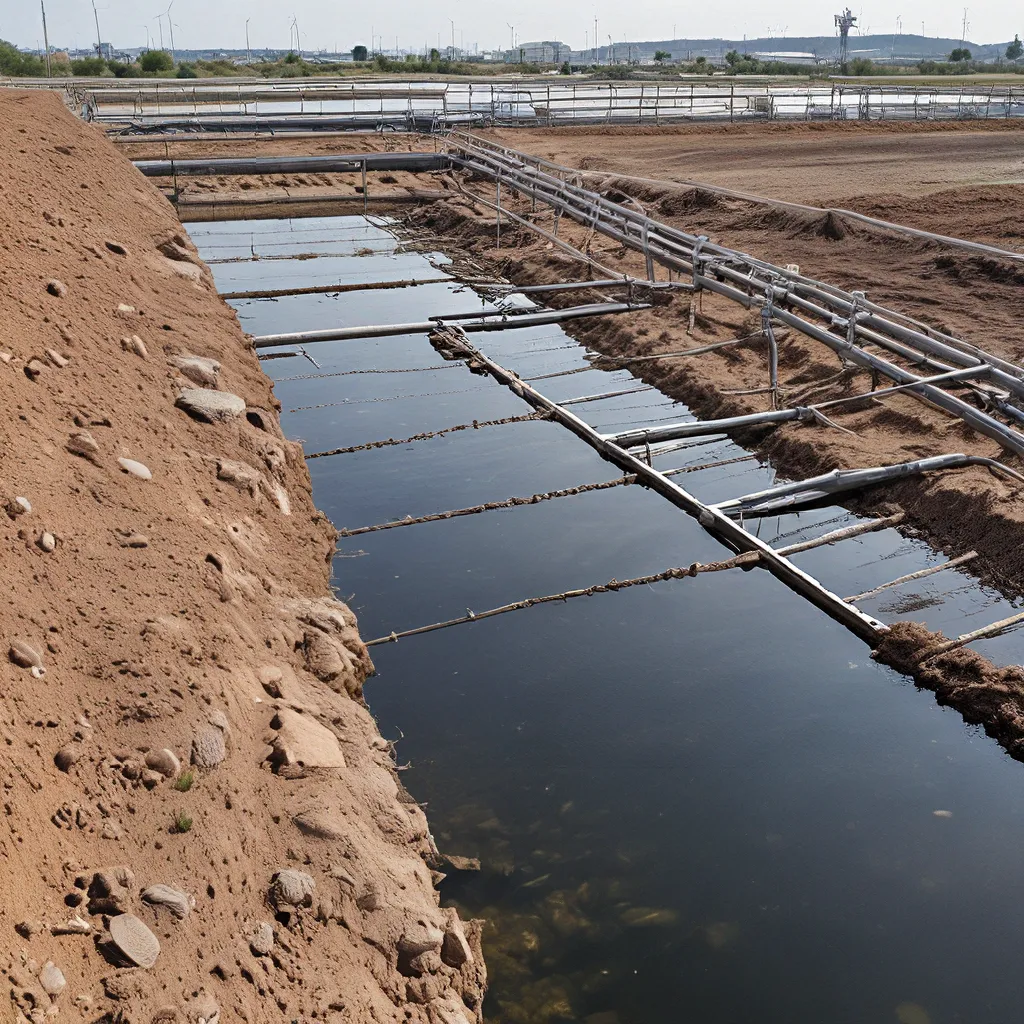
As an environmental enthusiast, I’ve always been fascinated by the intricacies of wastewater treatment. It’s an area of science that not only tackles the practical challenge of cleaning our water but also pushes the boundaries of technological innovation. And one technique that has piqued my curiosity is the potential of electrochemical processes in advanced wastewater purification.
Unveiling the Power of Electrochemistry
Imagine a world where we could harness the very forces that govern the flow of electrons to tackle the complex issue of water contamination. That’s precisely what electrochemical processes aim to achieve. By leveraging the principles of electrochemistry, these methods employ electrical current, electrodes, and specialized reactors to facilitate a wide range of chemical reactions that can effectively remove contaminants from wastewater.
Emerging research has shown that electrochemical processes offer a versatile and efficient approach to wastewater treatment, capable of addressing a diverse array of pollutants, from heavy metals to organic compounds and even microplastics. What’s particularly intriguing is the potential for these methods to operate in a modular and scalable manner, allowing them to be tailored to the specific needs of different wastewater treatment facilities.
But the true beauty of electrochemical processes lies in their ability to adapt and evolve. As ongoing studies continue to unravel their complexities, we’re seeing a growing understanding of how these techniques can be fine-tuned and optimized to achieve even greater levels of efficiency and environmental impact.
Diving into the Electrochemical Toolkit
One of the key advantages of electrochemical processes is the wide range of techniques that fall under this umbrella. From electrocoagulation to electrooxidation and electrochemical disinfection, each method offers unique capabilities and trade-offs that can be leveraged to address specific wastewater challenges.
For instance, electrocoagulation harnesses the power of electric current to induce the formation of coagulants that can effectively remove a variety of contaminants, including heavy metals, suspended solids, and oil-based pollutants. This approach is particularly useful in situations where traditional coagulation methods may fall short, such as in the treatment of oily wastewater or high-strength industrial effluents.
On the other hand, electrooxidation relies on the generation of powerful oxidizing agents, such as hydroxyl radicals and ozone, to break down and mineralize a wide range of organic pollutants, including persistent and recalcitrant compounds. This technique has shown promise in addressing the challenge of emerging contaminants, such as pharmaceutical residues and personal care products, which can be particularly difficult to remove using conventional methods.
And then there’s electrochemical disinfection, which harnesses the power of electrochemically generated oxidants to inactivate pathogenic microorganisms, including bacteria, viruses, and protozoa. This approach can be particularly valuable in situations where traditional disinfection methods, such as chlorination, may be less effective or pose environmental concerns.
Navigating the Complexities of Electrochemical Processes
While the potential of electrochemical processes in wastewater treatment is undeniable, it’s important to acknowledge that these techniques are not without their own complexities and challenges. As with any advanced technology, there are nuances and trade-offs that must be carefully considered.
One of the key aspects to navigate is the optimization of operational parameters, such as electrode materials, current density, and reaction time. These variables can have a significant impact on the efficiency, selectivity, and cost-effectiveness of the electrochemical process. Recent studies have shed light on the importance of in-depth pilot-scale testing and computational modeling to better understand and fine-tune these critical parameters.
Another important consideration is the energy consumption associated with electrochemical processes. While these methods can be highly effective, they do require a significant input of electrical energy, which can impact the overall cost and sustainability of the treatment solution. Ongoing research is exploring ways to optimize energy efficiency and renewable energy integration to address this challenge.
Furthermore, the environmental impact of the by-products and residues generated during electrochemical treatment must also be carefully evaluated. Proper disposal or valorization of these materials is crucial to ensure the overall environmental sustainability of the process.
Embracing the Future of Electrochemical Wastewater Treatment
As I delve deeper into the world of electrochemical processes in wastewater purification, I can’t help but feel a sense of excitement and optimism. This technology represents a promising pathway towards more efficient, sustainable, and environmentally-conscious water treatment solutions.
At Alpha Wastewater, we recognize the tremendous potential of electrochemical processes and are actively exploring ways to incorporate these cutting-edge techniques into our service offerings. By staying at the forefront of innovation and collaborating with industry experts, we’re committed to delivering tailored solutions that address the unique needs of our clients and contribute to a healthier, more resilient water ecosystem.
As the field of electrochemical wastewater treatment continues to evolve, I’m confident that we’ll witness remarkable advancements in the years to come. From the optimization of existing techniques to the development of novel electrochemical approaches, the possibilities are truly boundless.
So, if you’re as intrigued by this topic as I am, I encourage you to dive deeper into the world of electrochemical processes. Explore the latest research, engage with industry leaders, and stay tuned for the exciting breakthroughs that are sure to emerge. Together, we can unlock the full potential of this transformative technology and pave the way for a future where clean water is not just a luxury, but a fundamental right for all.